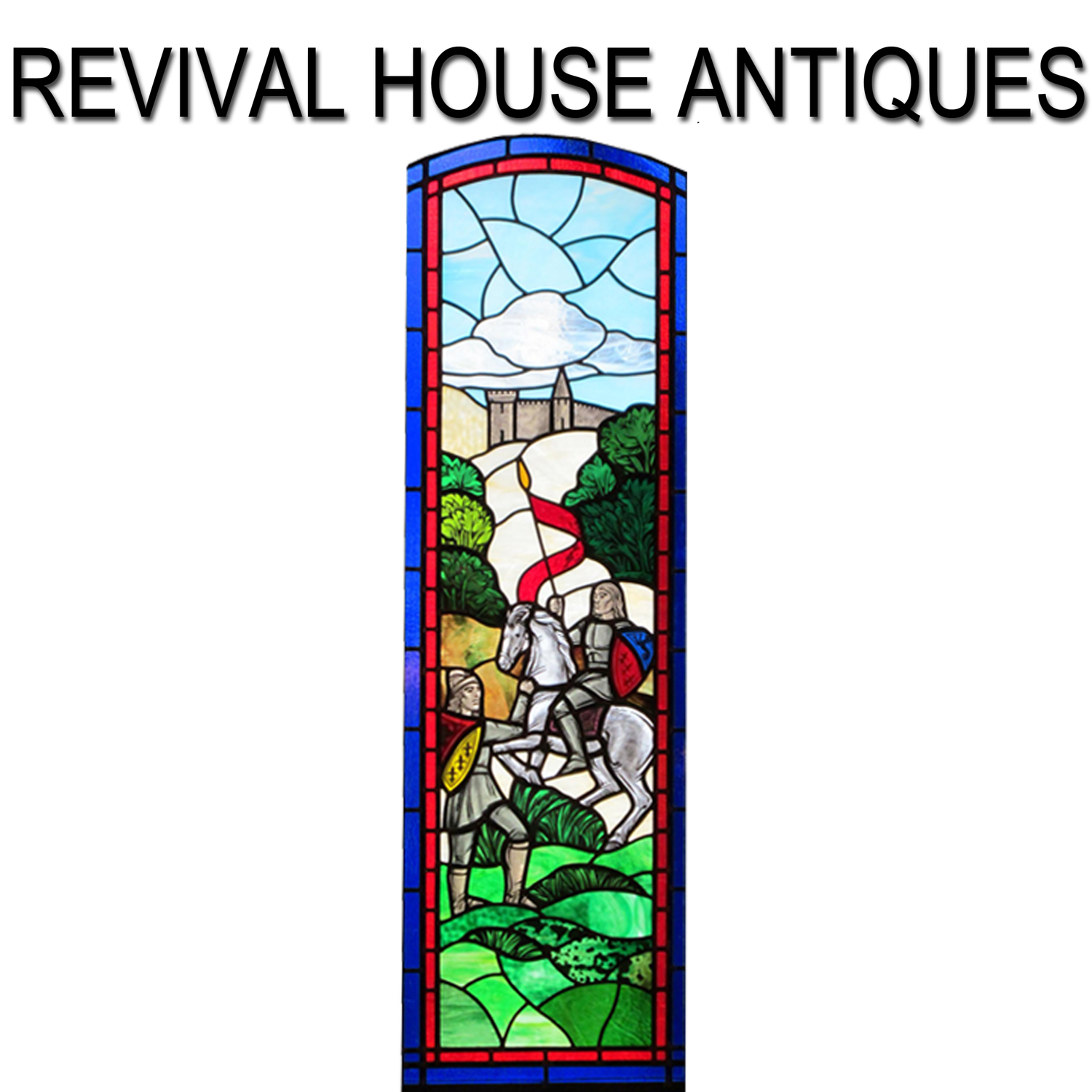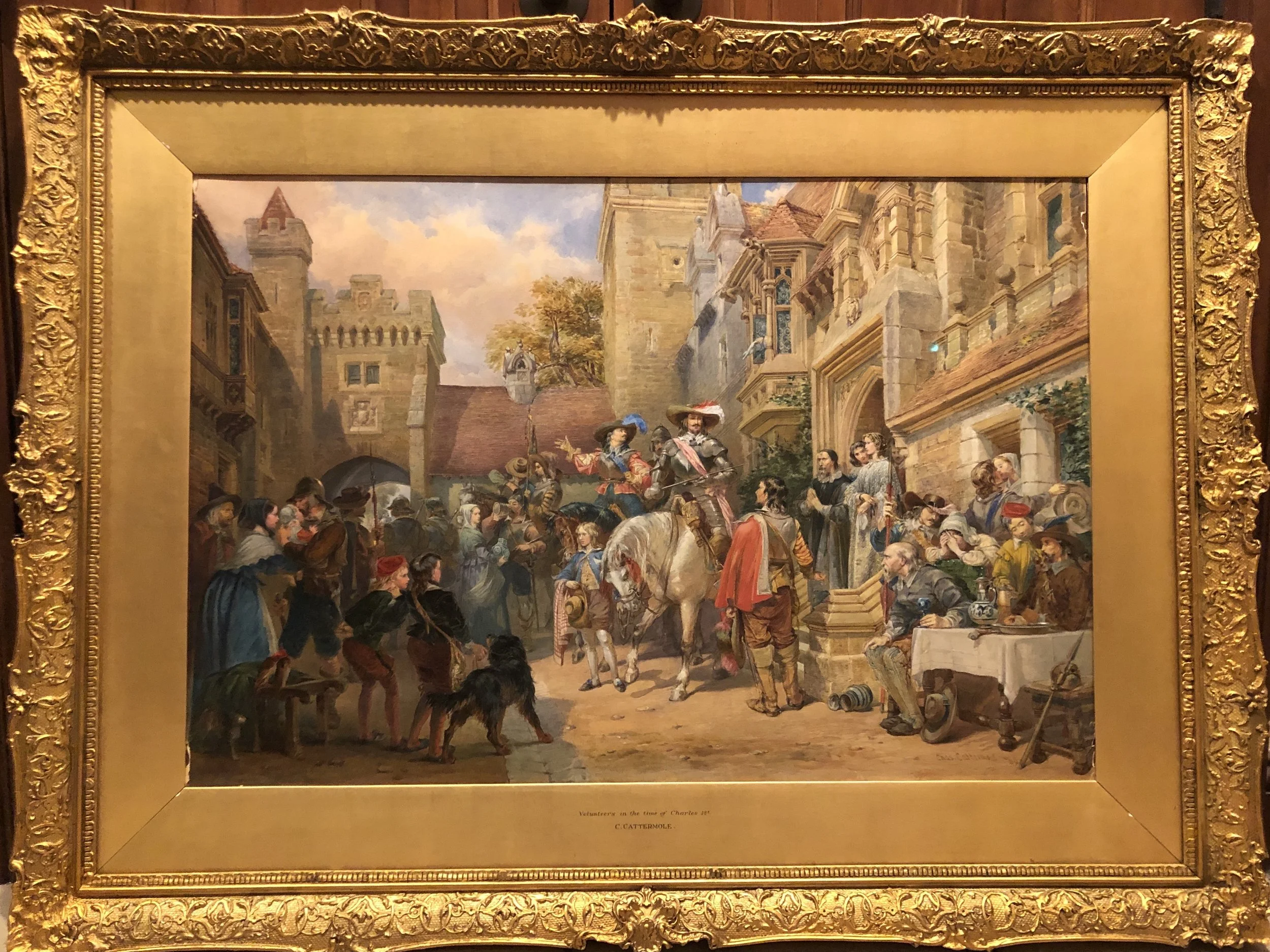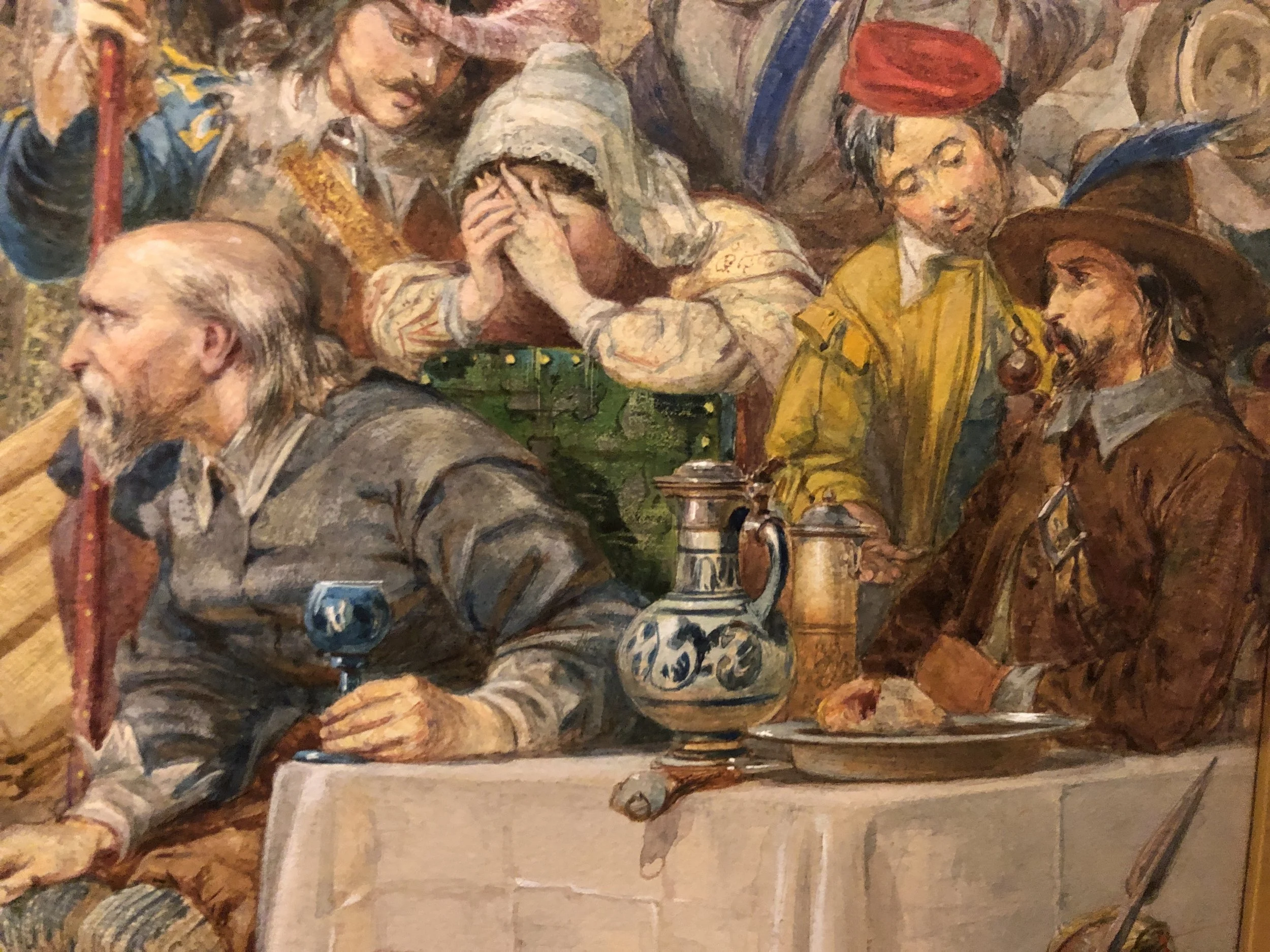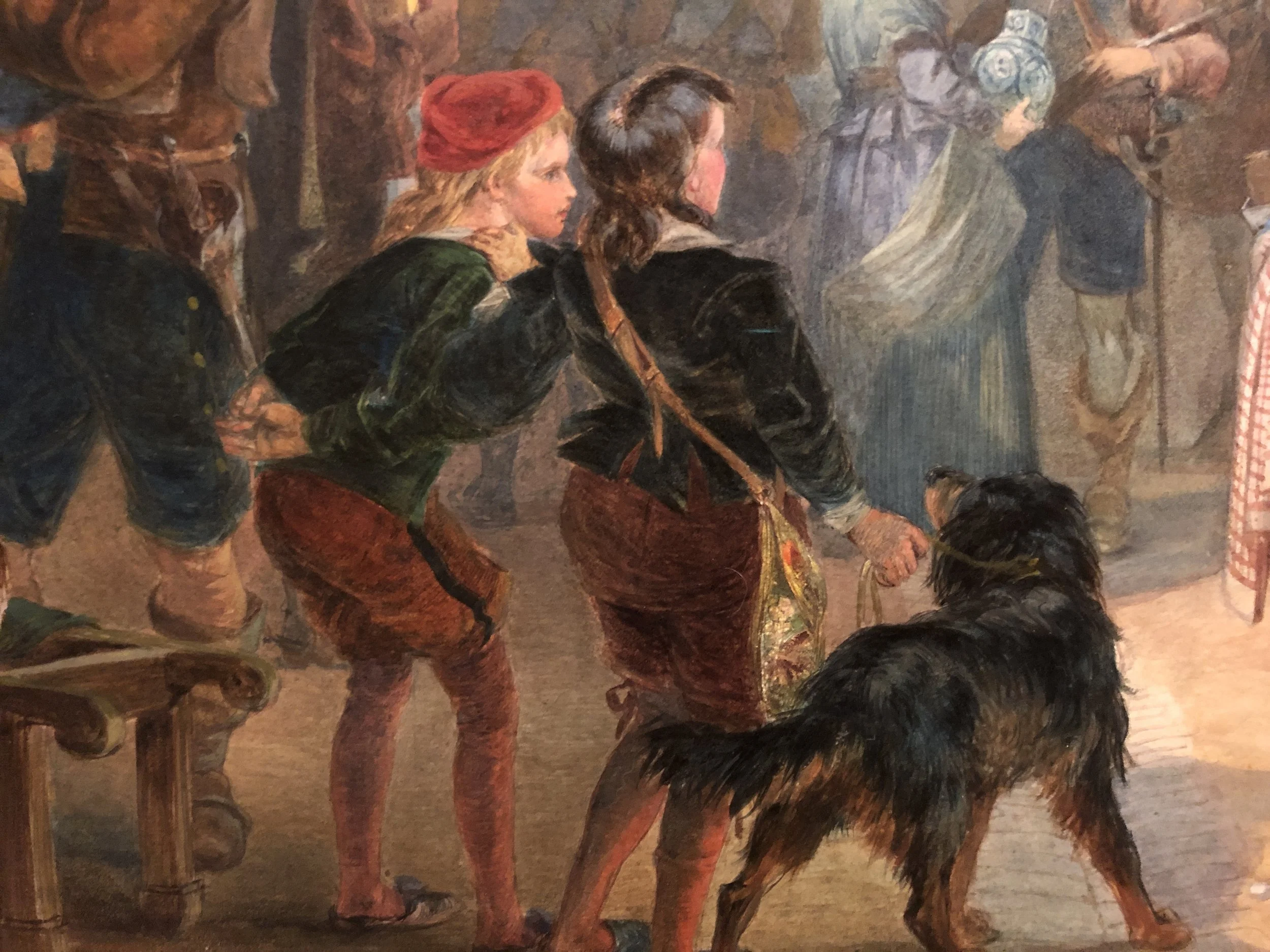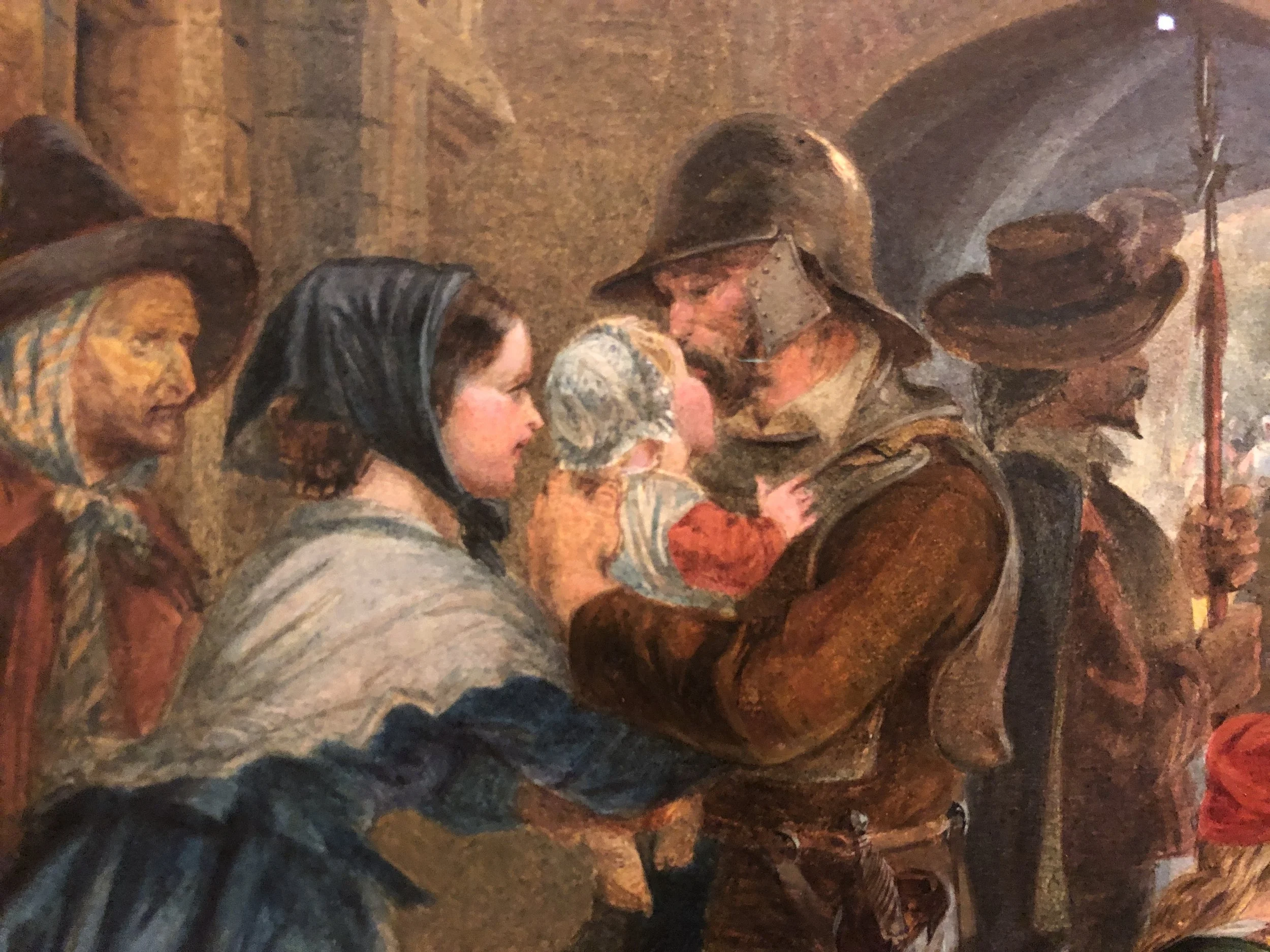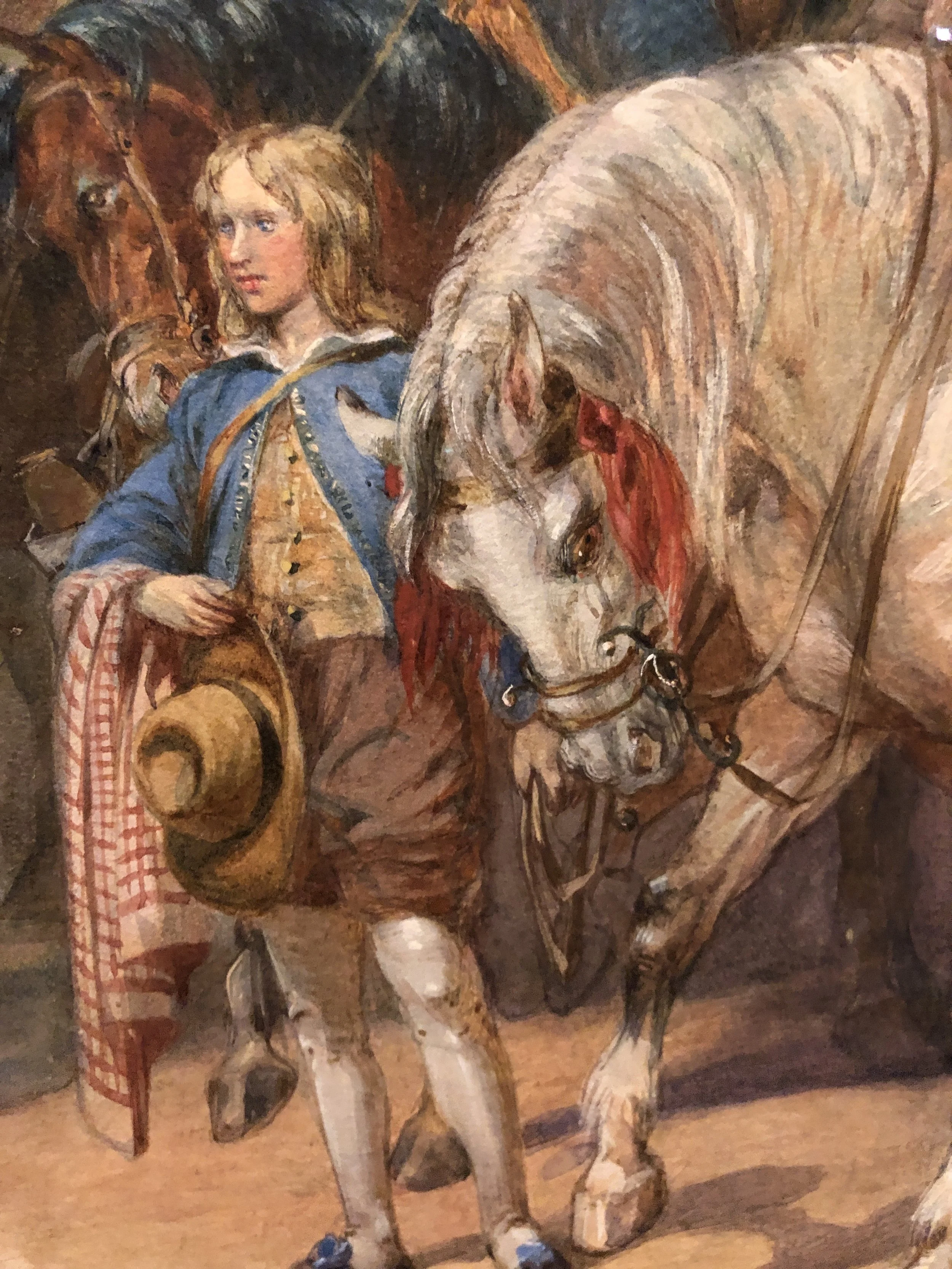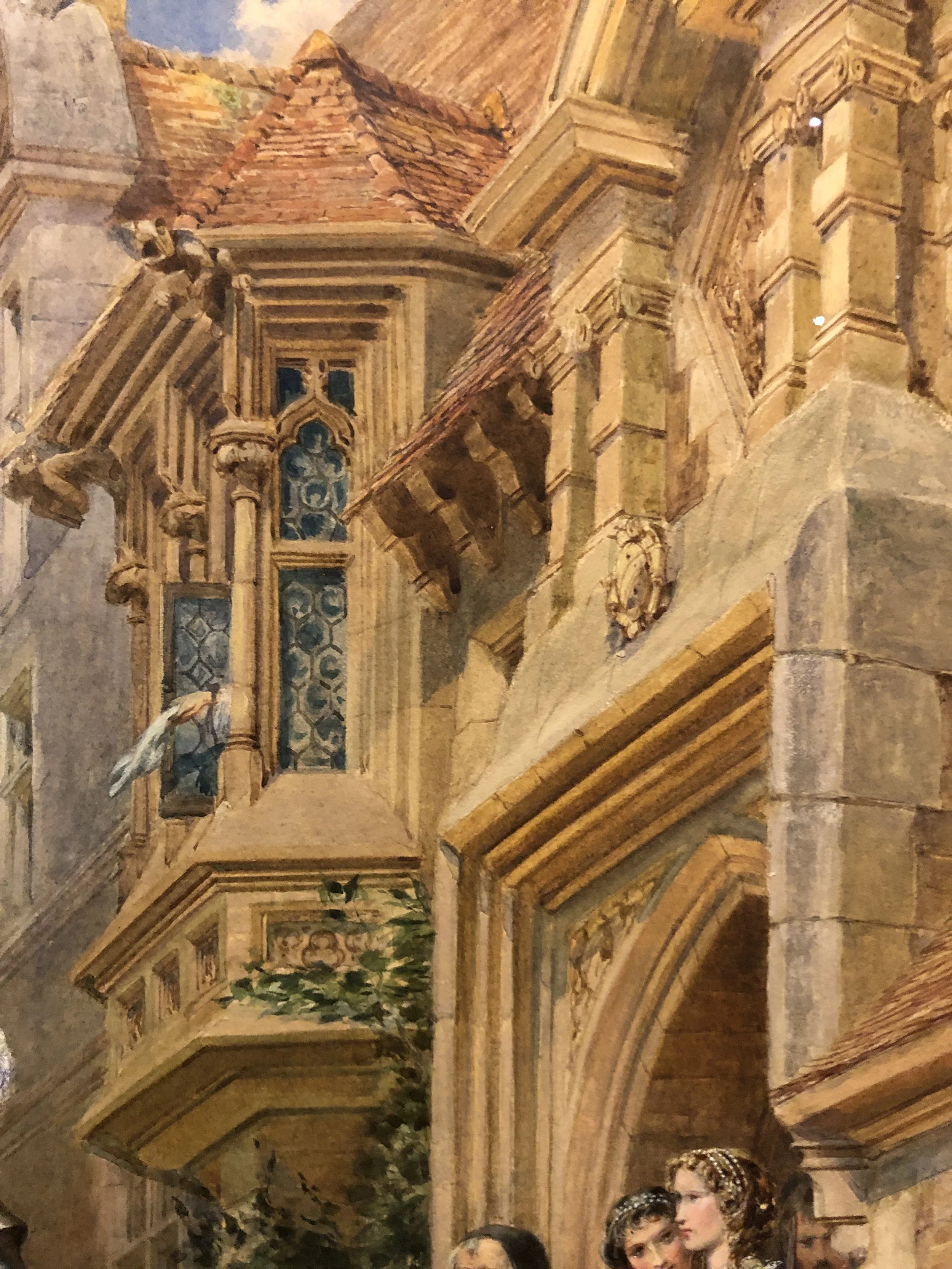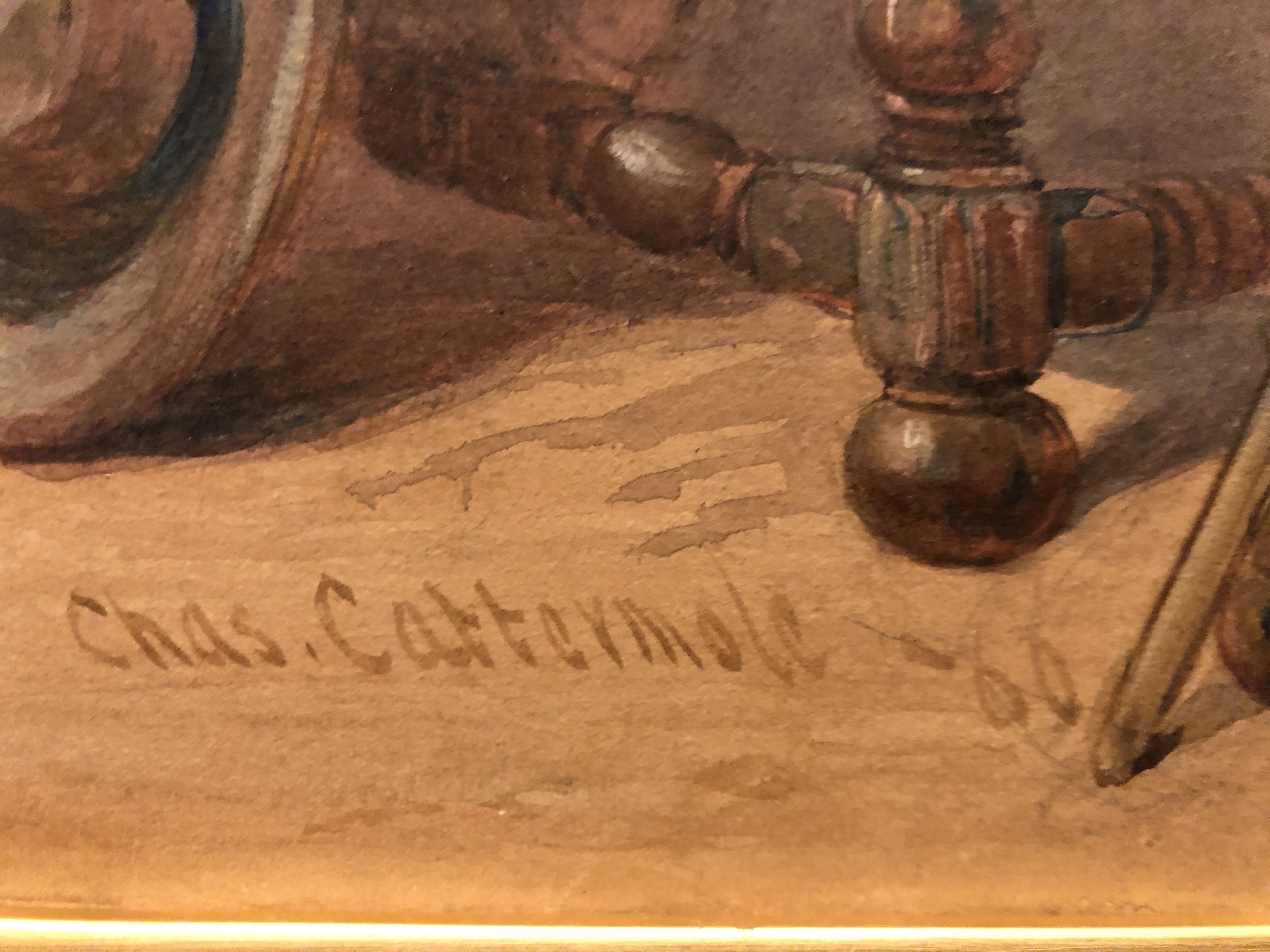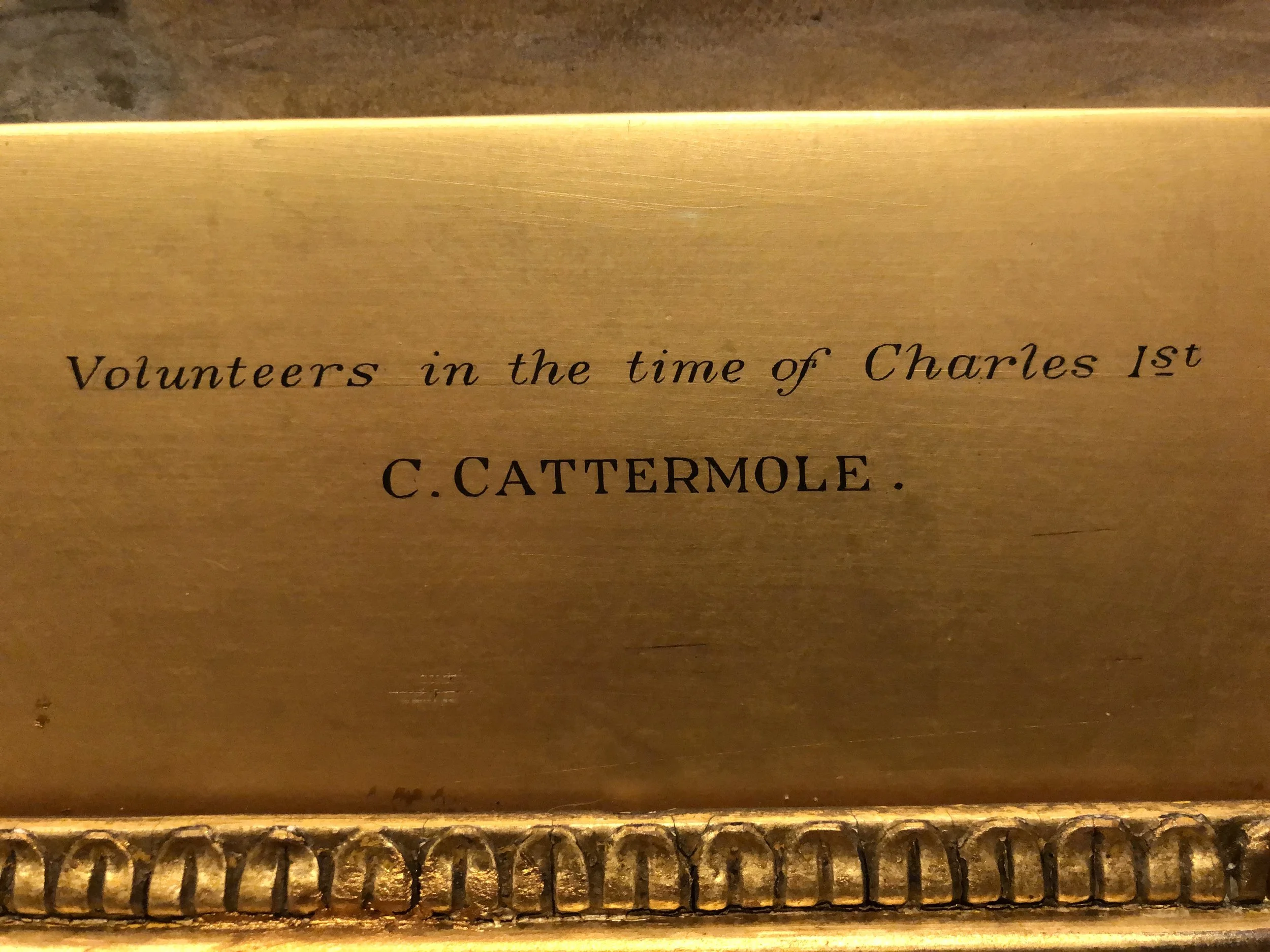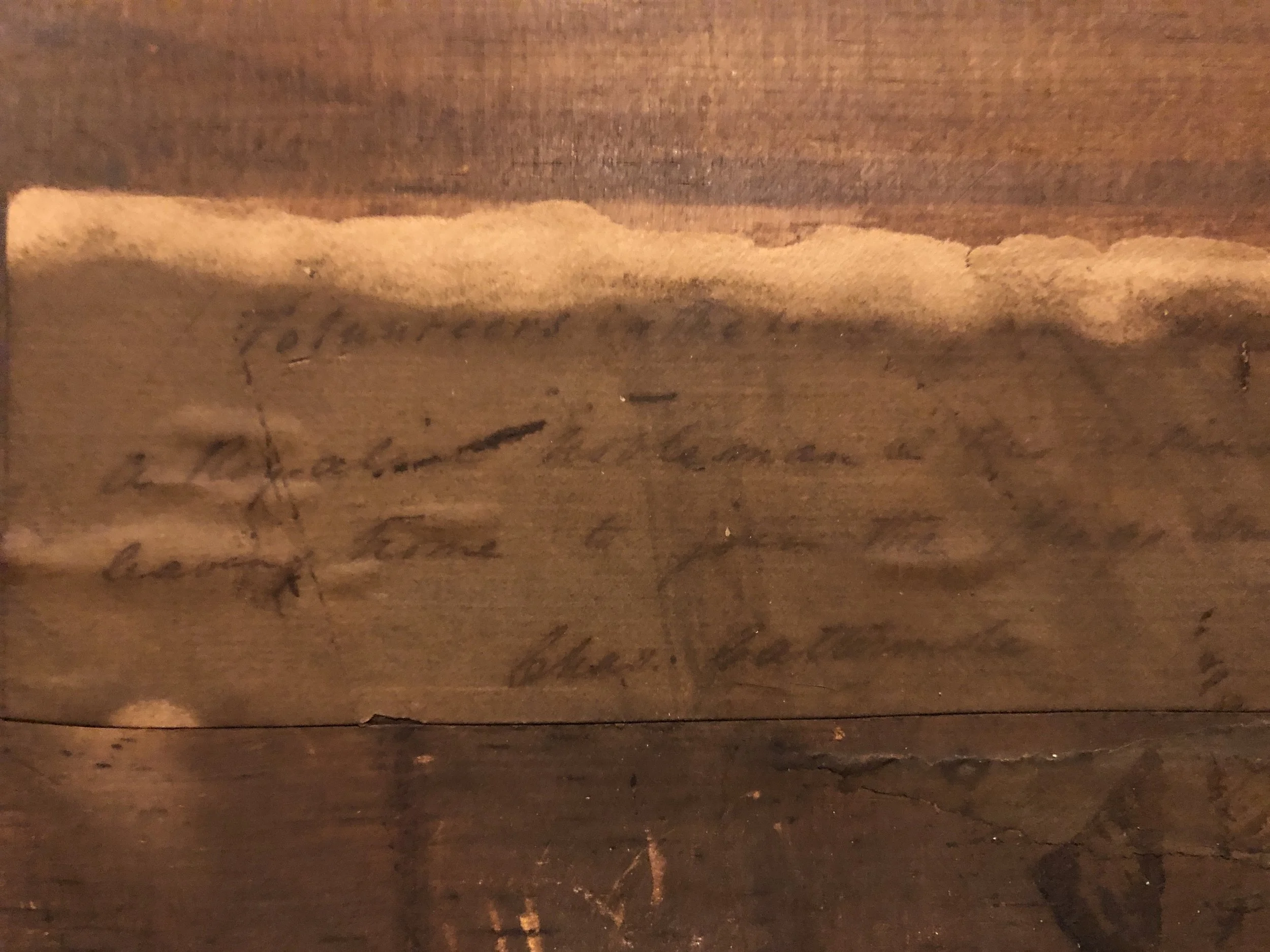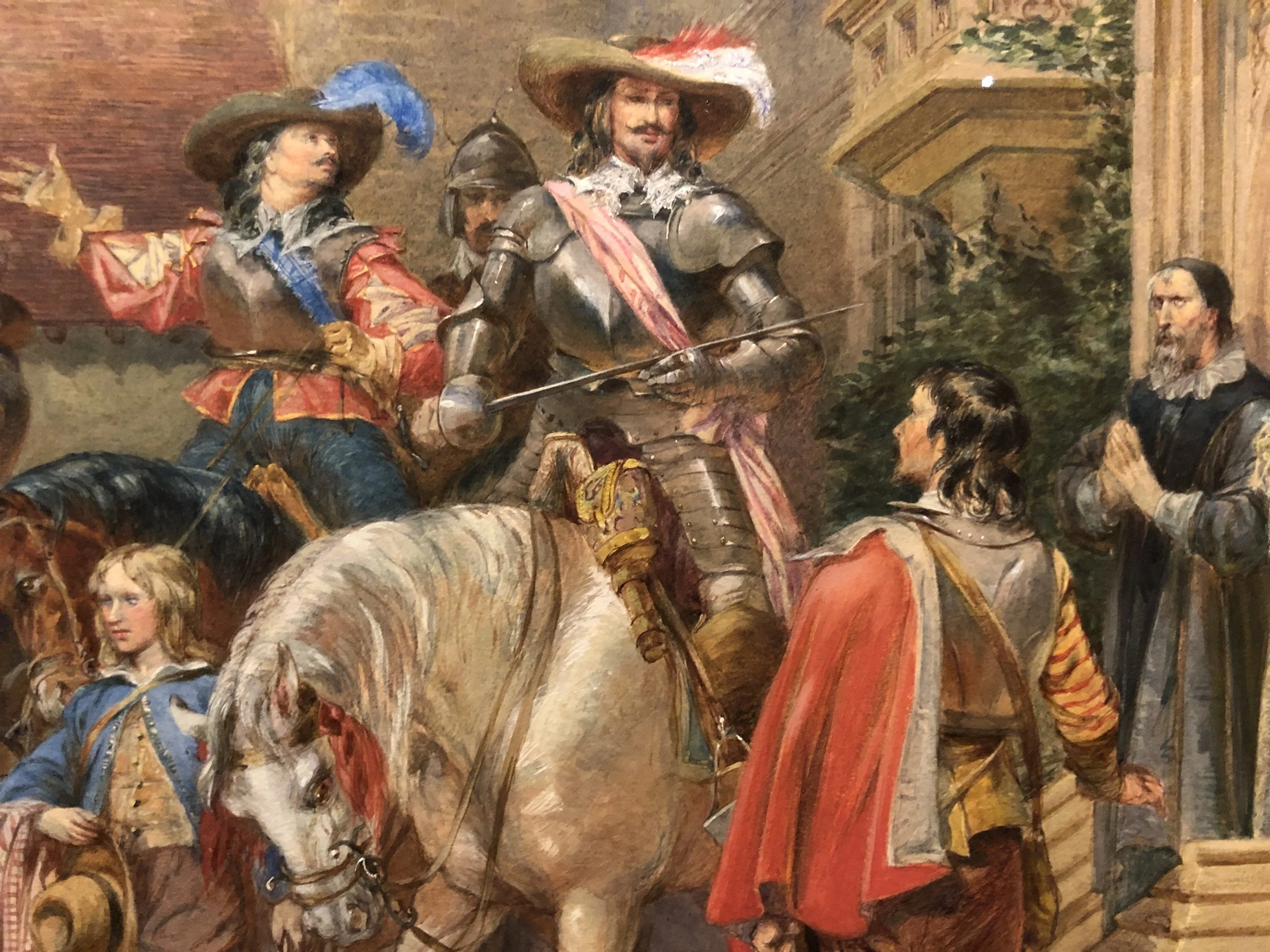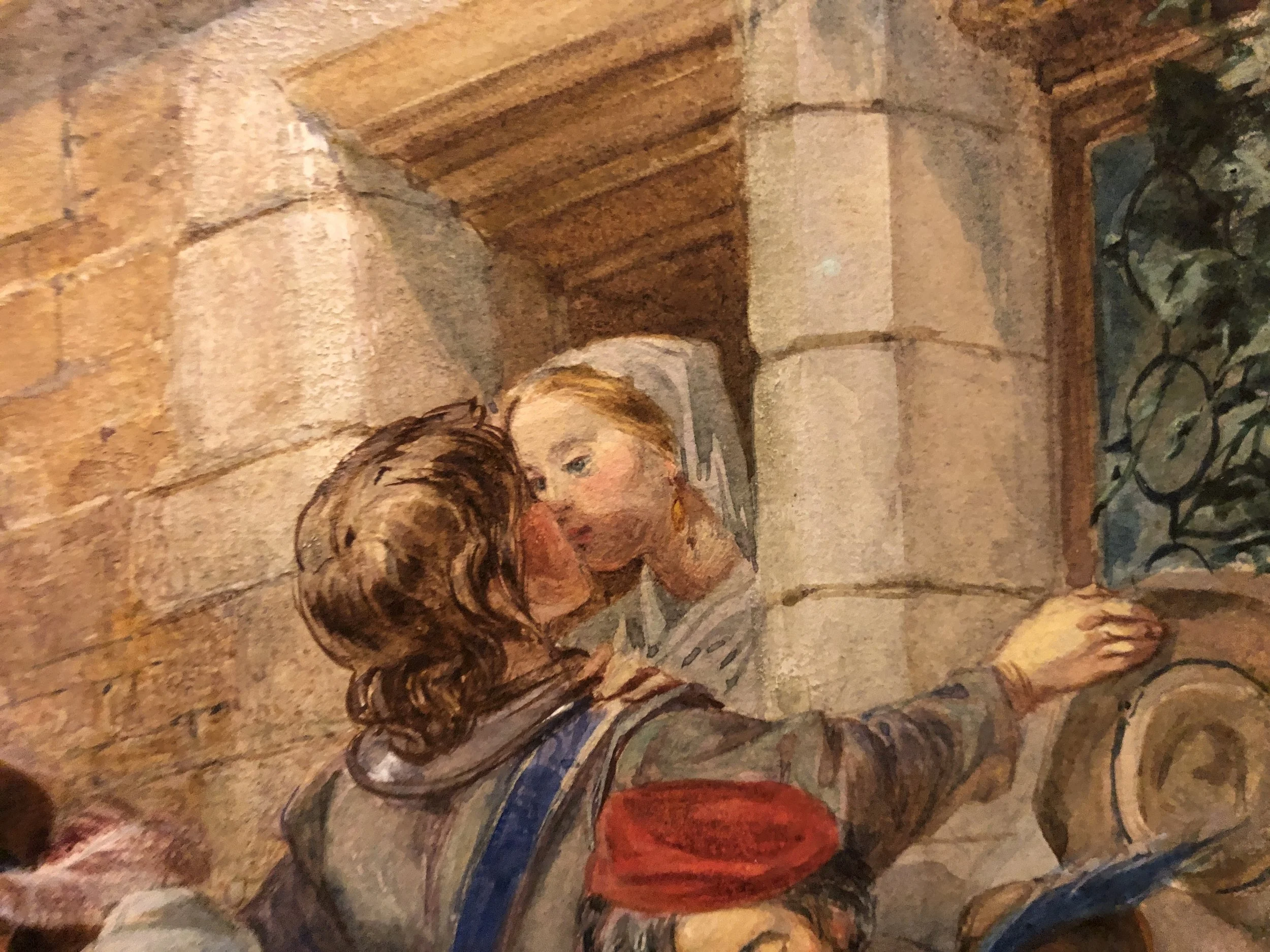Charles Cattermole, Watercolor Painting, "Volunteers in the Time of Charles I"
Charles Cattermole, Watercolor Painting, "Volunteers in the Time of Charles I"
A Watercolor and gouache painting by English artist, Charles Cattermole (1832-1900), entitled “Volunteers in the time of Charles I”. The painting is a true tour de force with a large number of individuals depicted in great detail. The central figure is a soldier in armor mounted on a white horse, apparently looking for volunteers to join the army in service of the King (Charles I). The townsfolk gather round listening to the soldiers. A young soldier kisses his sweetheart as he says goodbye. An older soldier kisses his baby as his wife stands with him. Another soldier takes a drink from a tankard while a woman holds the jug to replenish it. Older men sit at a table watching with a glass. Two young boys and a dog watch the activity and wish they could be the young man squiring the knight. A young woman waives her handkerchief from an upper story window. The painting is signed and dated 1860 and titled on the liner.
About the artist: Charles Cattermole was part of the wave of Victorian artists who were interested in reconstituting the Britain of the past in their pictures, combining an imaginative and lively vision of history with an antiquarian attention to period detail in such matters as costume, accessories and setting.
This reappraisal of history painting had been gaining momentum in England since about 1830, and was prompted in large measure by the huge impact of Sir Walter Scott’s historical novels. Painters also tended now to favour scenes inspired by minor, and very often domestic, dramas instead of the more conventional heroic episodes of bygone ages.
Cattermole was heavily influenced by his uncle, George Cattermole, a successful watercolourist and illustrator of Walter Scott, who specialised in historical genre. Despite the narrow focus of his art, Cattermole’s brush encompassed various distant eras in British history, his subjects ranging from the monastic and military life of the Middle Ages to swashbuckling incidents from the Civil War. His antiquarian bent enabled him to recreate the backdrop of historical anecdote with accuracy and fidelity, and his watercolours are perhaps most alluring when they illustrate scenes of wild chase, battles, duels and sieges.
Cattermole showed his work at venues including the Society of British Artists*, the British Institution, the Royal Academy of London* and the Society of Painters in Water Colours*, of which he became an associate in 1863 and a full member in 1870. When he first exhibited with the Society in 1864, The Art Journal said ‘he possesses qualities which will, before many years, win for him honour and reward… action, character, and composition, excellencies wherein this artist bids to be preeminent.’
Reviewing the Society’s 1869 winter exhibition in The Morning Post on 6 January, the art critic commended the ‘vigour’ and ‘refinement’ of Cattermole’s style: ‘The delicacy of colour and the neatness of touch by which his present drawings are so strikingly distinguished have not been purchased… at the cost of the still more precious qualities of dramatic action and characteristic expression.
The works he now exhibits are, for the most part, interiors of churches, castles and baronial halls, which are in each case the scenes of stories so diversified in sentiment, incident, and character as to possess all the requisite freshness and variety of interest. In the uniform skill with which he treats a number of dissimilar subjects there is conclusive evidence not only of the artist’s versatility of fancy but of a still rarer gift – his capacity to adapt his manner to his theme.”
The painting measures 24” x 35” and overall with liner and gilt frame measures 35” x 46 1/2”. The painting has had a small tear to each of the four corners that has been professionally conserved by a paper conservator. The frame has also had significant damage and restoration with re-painting. The glazing is new museum grade glass. Ready to hang.
This item includes FREE Shipping in the United States. All other areas would incur additional shipping charges.
